
One of our main priorities is to ensure universal access to, and informed use of effective contraception. Millions of people lack the knowledge and information to determine when or whether they have children, and they are unable to protect themselves against sexually transmitted infections (STIs).
Articles about Contraception
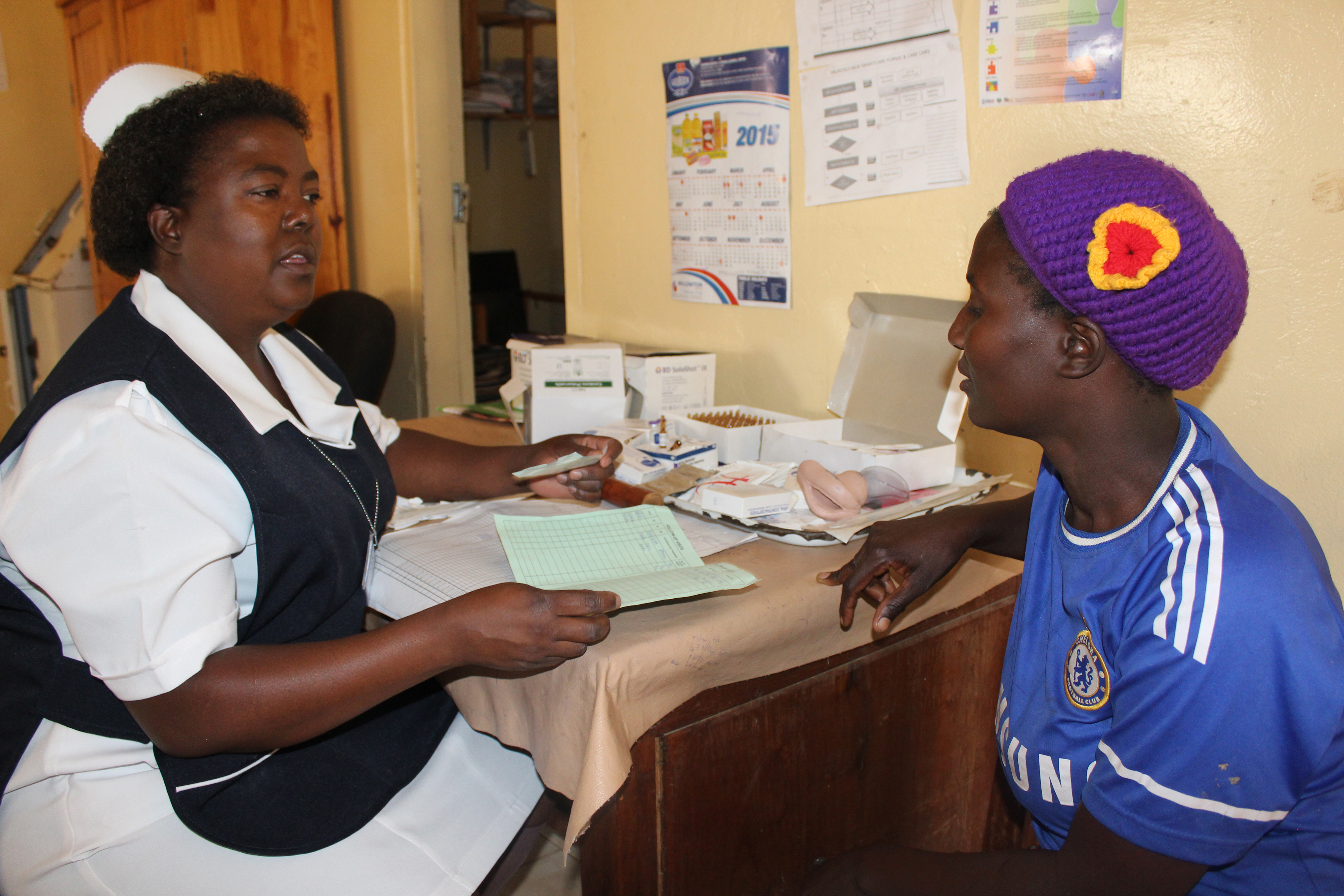
Focus on Family Planning #3: Applauding family planning in Zambia
Before Agnes Nkandu found out about contraception the 24-year-old was constantly worried about getting pregnant. As a result she found it difficult to enjoy married life. It was while she was pregnant with her first child that she found out about family planning and about spacing children from her local clinic in the Chongwe District of Zambia. Agnes made the decision to use the family planning services because she wanted to ensure that her births were spaced. She now has three children and believes spacing them has meant that they have all received quality care and the chance to lead a dignified life. “I have observed that couples that do not space their children have difficulties taking care of them,” she said. “I do not want my children to be a bother to anyone and that is why I sought family planning services to enable us to have control over the number of children we have.” Agnes is now supporting other women so they have the same choices. She said: “Those that I interact with attest to the fact their lives have improved as a result of them using family planning services. Most women are able to invest in initiatives that advance their personal development such as going back to school or starting a business. They have realised that there is more to life than just bearing children.” Agnes said that men were also becoming supportive of their partners’ need to access the services. “More women from my community have continued to benefit from these services as evidenced by the reduction in the number of children they have. Married people are now only having the number of children they can afford to provide for,” she added. Agnes told us that it had helped to reduce the number of unsafe abortions which often resulted from unplanned pregnancies. She said people were now making informed decisions concerning their reproductive health issues because the information and services were available. George Phiri, Agnes’s husband, a 38-year-old bricklayer, said he thought that family planning was the key to easing the income and financial burdens on a household. He said: “Even men have come to appreciate the benefits of family planning services. Some have even started escorting their wives to health facilities to seek these services.” “My wife and I used this service to help us not have any unplanned children and to give space to the ones we have already to develop well. I felt happy because I knew that I had made the right decision to learn about family planning methods. We are able to concentrate on our work without worrying about having an unplanned pregnancy,” he added. More people, and an increasing number of men, are becoming involved in supporting their partners in accessing family planning services. Because couples are having only the number of children they are able to support and nurture, cases of child neglect are rare. “A healthy woman is productive and efficient. Therefore, we need to ensure that more women have access to family planning information and services because that is a sure way of promoting healthy and productive families and communities”, asserts Agnes. Agnes was, however, quick to point out that myths and misconceptions about conventional family planning methods still exist. She stressed the need for an increase in awareness raising initiatives aimed at dispelling such suspicions: “Some people still think that it becomes difficult to conceive after taking contraceptives over a period of time. But that is not true. I know that you can still conceive when you choose to even after taking family planning commodities for years because I conceived my second child after taking family planning pills for four years. And I am aware of many women in my community that can attest to the fact that contraceptives do not affect one’s fertility,” said Agnes. At the London Family Planning Summit in 2012, the Government of Zambia made a number of pledges and commitments towards budgets, programmes and policies for family planning. The Zambian Government promised to increase access to a range of contraceptives, particularly for the underserved or disadvantaged populations. It also pledged to permit an increase in task shifting to community health assistants, which will make more efficient use of human resources and tackle staff shortages. There are many women and adolescents in Zambia who are not as lucky as Agnes in accessing rights based family planning services. The Government of Zambia still needs to do more to expand access to sub-district structures and empower girls with the right information and services around family planning.
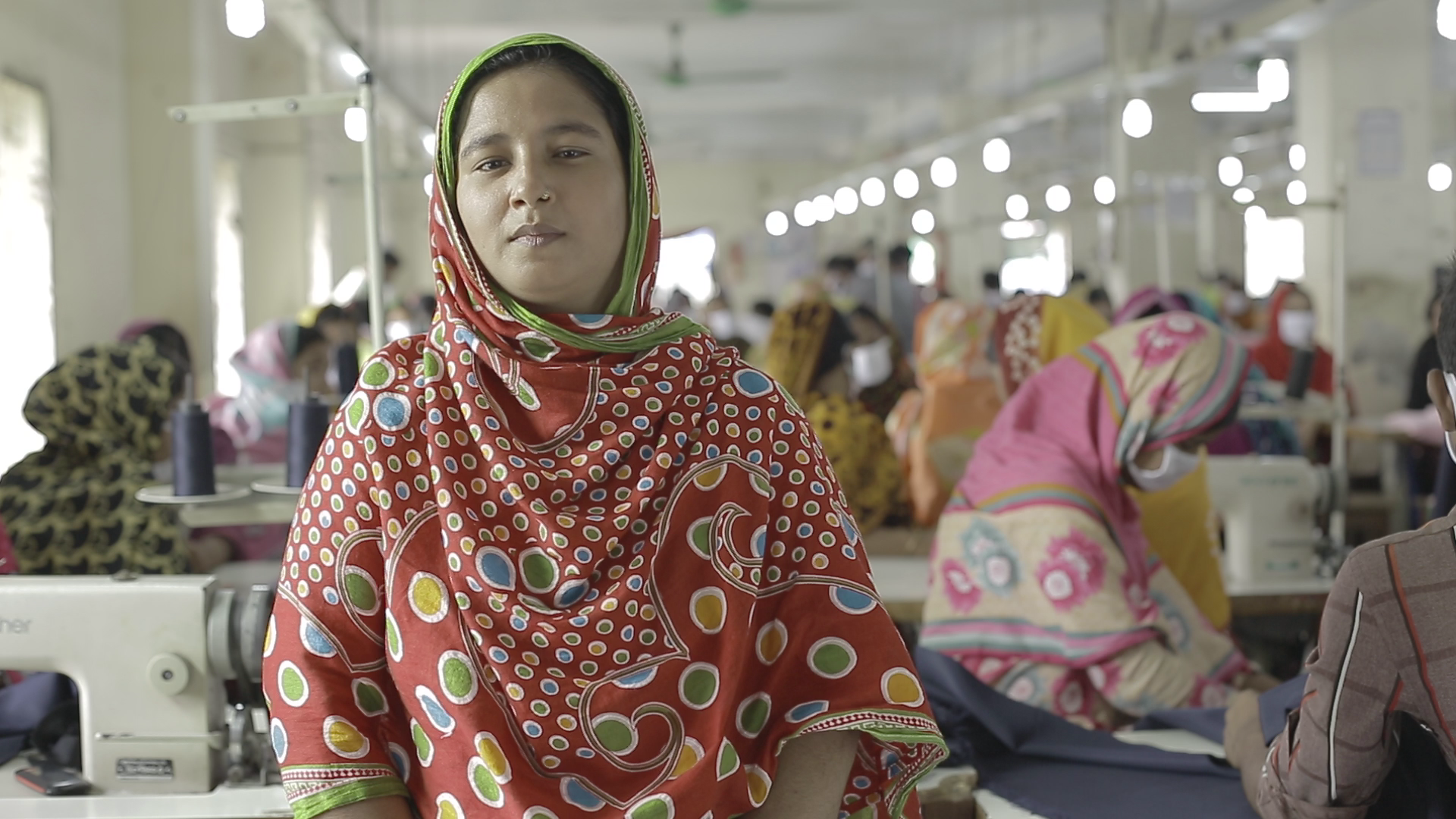
Focus on Family Planning #2: A real difference for female garment workers in Bangladesh
Jasmin Akter, 23, is a married female garment worker from the poverty stricken northern district of Gaibandha in Bangladesh. Gaibandha is situated some 200 kilometres away from the capital Dhaka. Jasmin was brought up there with her sister and two brothers in a small hut made of straw and bamboo. She was enrolled in primary school and continued up until class five. Her father was a day labourer, he worked on agricultural farms where he earned a very low income. He died when Jasmin was only sixteen. The family was left in an extremely vulnerable position, and there were no options open for them to earn a living. At the time, Jasmin and her mother were working for their wealthy neighbours, offering domestic help in return for two daily meals, which they had to share with three other young family members. The situation was unbearable, and they found it increasingly difficult to carry on. Like other girls of her age in Bangladesh, Jasmin would have been a victim of child marriage, had it not been for the support of some neighbouring young women, who helped her to escape. She fled to Gazipur, the adjacent district to Dhaka, with some female garment workers from her community. After a couple of months, in 2010, she got a job with an export oriented garment factory as a ‘Helper’. Now, after five years, she is working as a Sewing Machine Operator and earns around US$300 a month. Jasmin got married in 2012. Her husband also works in the garment factory. Unlike some other young couples, Jasmin and her husband made the decision to delay pregnancy and Jasmin took the long-lasting family planning method ‘Implanon’ as contraceptive. Jasmin explains why they made this decision: “My job is very important to me. I struggled to make a living. I know I need to continue with my job to support my family. I have watched the suffering of other young girls who were also working in different garment factories. They got married and after a couple of months or sometimes a year, they became pregnant, became a mother. After managing all the household chores and baby care, they could not continue with their jobs. I don’t want this to happen to me.” The garment industry earns the highest foreign remittance for Bangladesh. The country is the second highest garment manufacturer and exporter in the world. Around 3.4 million workers, of which 80% are female, are employed in garment factories. Most of the workers are young, with low literacy levels and they come from rural areas. Due to the demands of the job, the long working hours and the confined working environments, garment workers often do not have the opportunity to access family planning and health care services. Such lengthy work shifts also mean that garment workers often miss out on the usual outreach health and family planning services offered by the NGOs. “Before my marriage,” Jasmin says, “I was sharing a bed in a small room with three other female colleagues at Gazipur. I met several Reproductive Health Educators from the Family Planning Association of Bangladesh (FPAB). FPAB conduct outreach works to promote family planning among the female community in that area. During some of my holiday evenings, I used to attend those sessions on family planning with my colleagues and friends. I learnt about family planning from those sessions. It was interesting, family planning is not all about birth control, it is about women’s health, family planning keeps different avenues open for economic engagement and saving women’s and girls’ lives.” “Without family planning,” Jasmin continues, “I would not have been able to reach this level in my job. This is not about the associated expenditure of a baby but the care and safety of the baby. No matter how much I am earning, the important thing is that I am earning something myself, it gives me a lot of confidence. If I had become a mother at such an early age, I am afraid I would not have been able to help my baby and hold down a job as well. I do dream of being a mother, maybe in one year, after becoming more settled in my job and conjugal life.” At the London Family Planning Summit in 2012, the Minister of Health from Bangladesh made several commitments to improve the quality and access to reproductive health services for women and adolescents. The government committed US40 million per year and 400 million in total by 2021 to minimize the resource gap for family services and to eliminate the geographical disparity and inequity between urban and rural, and between rich and poor. Such a commitment will help garment workers like Jasmin to have access to family planning and to make informed choices about the contraceptive methods that are best for them.
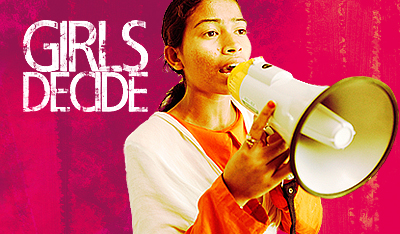
Girls Decide
This programme addresses critical challenges faced by young women around sexual health and sexuality. It has produced a range of advocacy, education and informational materials to support research, awareness-raising, advocacy and service delivery. Girls Decide is about the sexual and reproductive health and rights of girls and young women. Around the world, girls aged 10 to 19 account for 23% of all disease associated with pregnancy and childbirth. An estimated 2.5 million have unsafe abortions every year. Worldwide, young women account for 60% of the 5.5 million young people living with HIV and/or AIDS. Girls Decide has produced a range of advocacy, education and informational materials to support work to improve sexual health and rights for girls and young women. These include a series of films on sexual and reproductive health decisions faced by 6 young women in 6 different countries. The films won the prestigious International Video and Communications Award (IVCA). When girls and young women have access to critical lifesaving services and information, and when they are able to make meaningful choices about their life path, they are empowered. Their quality of life improves, as does the well-being of their families and the communities in which they live. Their collective ability to achieve internationally agreed development goals is strengthened. Almost all IPPF Member Associations provide services to young people and 1 in every 3 clients is a young person below the age of 25. All young women and girls are rights-holders and are entitled to sexual and reproductive rights. As a matter of principle, the IPPF Secretariat and Member Associations stand by girls by respecting and fulfilling their right to high quality services; they stand up for girls by supporting them in making their own decisions related to sexuality and pregnancy; they stand for sexual and reproductive rights by addressing the challenges faced by young women and girls at local, national and international levels.
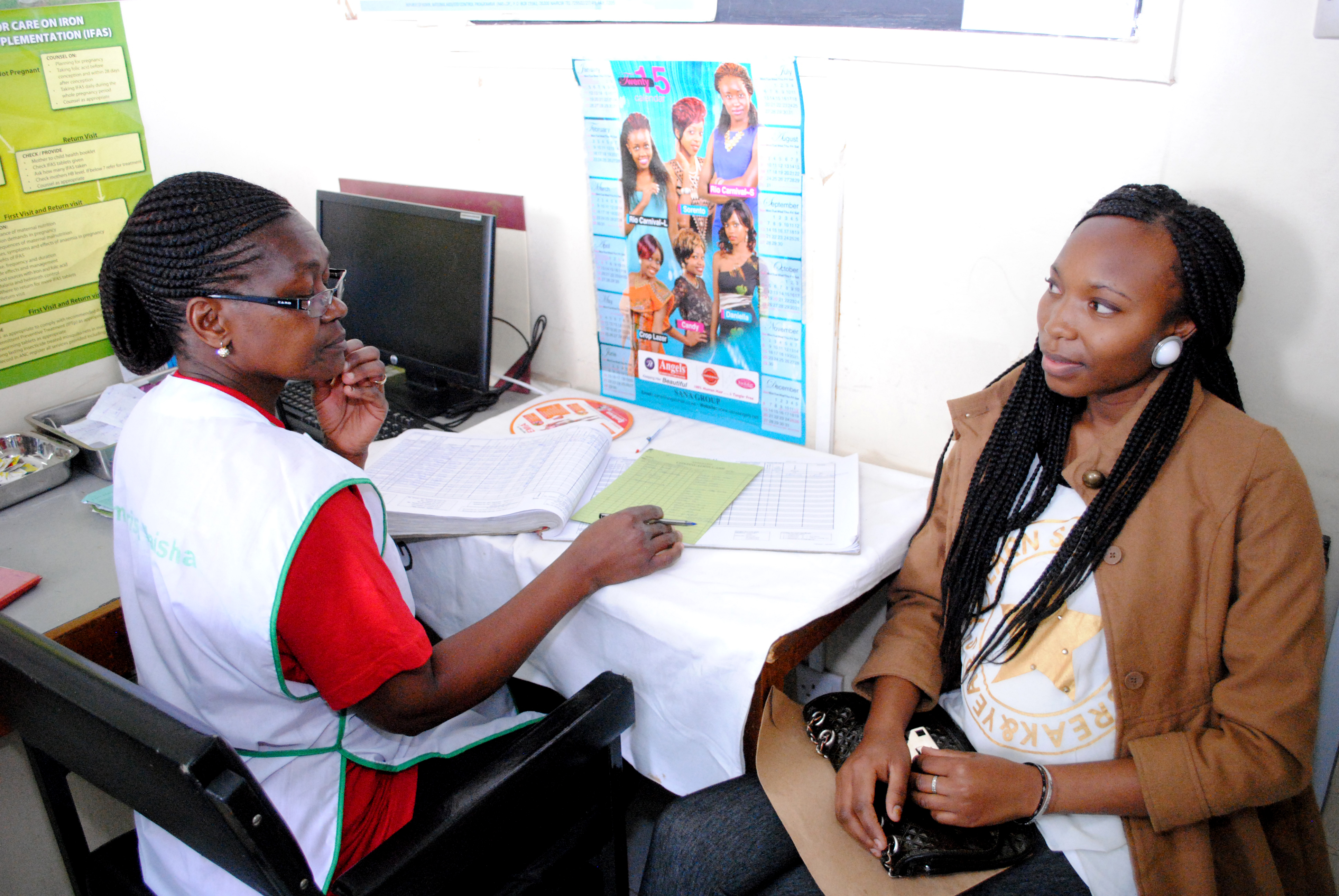
Focus on Family Planning #1: Focusing on family planning series
Four years ago governments and global health providers came up with a goal for an additional 120 million women to have access to contraception by 2020. The goal known as FP2020 was agreed at a summit about family planning, which was held in London in 2012. As we are almost half way through the time set to reach the target organisations around the globe are considering whether we are on track. Today marks the start of the meeting of the FP2020 Reference Group which will review progress in reaching the goals and will also look at the key challenges which are blocking progress. Over the next few days we will be posting a series of case studies which highlight the difference that family planning can make to people’s lives, starting with Elizabeth Odhiambo at the Makadara Health Facility in Kenya. Focus on Family Planning 1: Getting Good Service in the Makadara Health Facility Elizabeth Odhiambo is an Officer in Charge of the Makadara Health Facility in Kenya. For over ten years, Elizabeth has been overseeing the operation of the facility. “In the years I have worked in the facility,” Elizabeth says, “I have seen more and more women and men embracing family planning methods. We receive an overwhelming number of women and men seeking the services everyday. I have also seen more men taking a role in family planning services. Many couples come seeking information and services on family planning. Many women and men are able to get modern family planning services for free. Young people seek the services in the area because the facility staff have a good attitude to all clients.” The Makadara Health Facility is perhaps one of the most effective public health government facilities in Eastern Nairobi. In the recent years, it has earned an excellent reputation for having one of the leading Family Planning and Maternal Care services in Nairobi County, Kenya. Where preventive and curative treatment is concerned, the hospital boasts an exceptional record, evidenced by patients’ testimonials and referral cases. The facility has a total number of 25 nurses for all services, including 24 hour maternity services. The facility delivers between 200-250 babies every month and has 14 nurses rotating in two shifts. The facility is also the location of the sub-county drug depot, which is of huge benefit to the centre. Although the depot supplies drugs to 40 other health facilities in the sub-county, the Makadara Health Facility is a direct beneficiary. This facility is able to meet the family planning needs of both men and women in the area, with a variety of family planning methods to choose from, plus availability, affordability, acceptability and accessibility. “We are able to reach out and support more people with family planning methods because of the depot. For example, there are many suppliers, such as bars and youth groups, who collect condoms from the depot on a monthly basis,” Elizabeth says. The demand for modern methods of contraception is very high in Makadara: “Some of the commonly requested methods include IUD, injectables, male condoms and pills, and although the female condom is not commonly requested, we always stock some for the few that need them.” According to the Kenya Democratic Health Survey (KDHS) 2014, there has been an increase in the contraceptive prevalence rate from 46% in 2008/9 to the current 58%. This increase demonstrates the growing acceptance of contraceptives in the country. This is also evident in the Makadara Health Facility, Elizabeth reveals: “To us the increase in demand for family planning services and male involvement in family planning has made it easy for medical practitioners to offer services. Perhaps what stands out the most is the fact that many women and men are able to get modern family planning services for free. This kind of exemption makes the facility a one-stop-shop for many patients from the Nairobi Eastern area.” Although the facility is well equipped with supplies, it does have its challenges. The facility has a shortage of nurses and the ratio of health provider to patient is 1:25. This means staff have limited time available for administering the long-acting contraceptive methods to their patients. Overall, Elizabeth is really proud of her work and encourages all women and men to make informed decisions about their contraceptive methods: “Although we hear that other facilities experience stockouts, our facility has been lucky to serve as the sub-county drug depot and is therefore able to meet the FP needs of its clients.”
At a Glance 2015
Key facts and figures highlighting IPPF's achievements in 2015.
Locally owned
We want to enable all women and girls to decide about their body, the size of their family, their education and future. We provide services to meet their contraceptive needs, and bring about policy changes locally and globally, as their sexual and reproductive rights are human rights.
IPPF and Youth
The world has the largest youth generation ever. IPPF is putting young people at the heart of its services: with them, we want to change social norms and guarantee their rights.
Women, Girls and Gender
The data about gender inequality are shocking: millions of women are victims of early marriage, female genital mutilation and different sorts of gender violence and discrimination.
Service Delivery
Women and girls around the world have an unmet need for reproductive health services. In 2015, IPPF provided 175 million services, 82% of which went to poor and marginalised people.
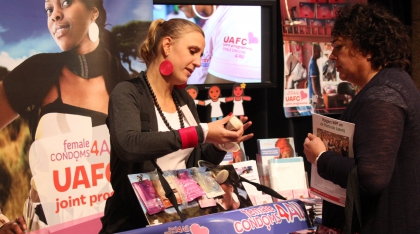
Webinar: Comprehensive female condom programming
On 19 November 2015, IPPF is holding a webinar in collaboration with the Universal Access to Female Condom (UAFC) on comprehensive female condom programming. Time: 11:00 AM Central European Time (CET) / 10:00 AM London (GMT) Female condoms are the only women-initiated, dual protection method available. They have been on the market for 20 years and recently many new innovations have emerged. There are now various female condoms available, made of different materials, with a ring, sponge or in the form of a tampon to ease insertion. Variety is the spice of life! Are you interested in (working with) female condoms, or are you working with female condoms but would you like to strengthen your expertise and hear about the latest updates? Join the Universal Access to Female Condom (UAFC) webinar on 'Comprehensive female condom programming: from marketing to advocacy', tailor-made for IPPF regional offices and MA’s. During this 60-90 minute webinar, you will hear all about: Female condom product development: which types are available? This includes also an introduction to the Female Condom Market Intelligence Portal (FCMI); Programming and advocacy experiences from Cameroon and Nigeria; A summary of the Business Case for Female Condoms, which analyses the cost-effectiveness of investing in female condoms; An overview of upcoming female condom advocacy moments that you can link up with; A dialogue on future engagement, including collaboration and support for comprehensive female condom programming. If you wish to join, please send your confirmation to Rineke van Dam :[email protected]. The webinar will be hosted through GoToMeeting. Call-in options will be sent to you after application.
Pagination
- Previous page
- Page 19
- Next page






